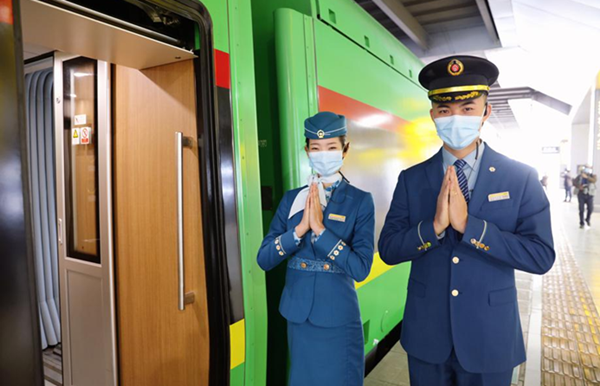
Crew members ona Fuxing bullet train on the China-Laos Railway. [Photo by Yang Zixuan/for chinadaily.com.cn]
The China-Laos Railway is bringing historic opportunities for Yunnan province to integrate into the China-Laos economic corridor and promote economic and social development in cities along the railway, the provincial government said.
The railway connects Kunming in Yunnan with the Lao capital Vientiane.
The 1,035-kilometer railway started operations in December 2021.
Yunnan released a three-year plan on Feb 16 on maintaining and developing the railway.
The plan makes clear the overall goals of multiplying the volume of passenger and cross-border freight, the number of market players in cities along the line and keeping the railway in regular operation.
The plan will take action on constructing international channels and logistics hubs, developing industries along the line and cultivating market players.
This year, the Yunnan Development and Reform Commission will allocate 500 million yuan through provincial budgets to invest in infrastructure construction along the railway, giving priority to construction of freight stations, railway routes, logistics hub, bulk commodity distribution centers and industrial parks.
The province will construct a transportation system that connects the railway stations with expressways, airports and waterways. International bulk commodity distribution centers of steel, nonferrous metals, electromechanical, vegetables, fruits and flowers will be built at major logistics hubs along the railway. Logistics and e-commerce business runners are encouraged to build overseas warehouses.
In the aspect of industrial development, the province will emphasize fields including cross-border agriculture, tourism, e-commerce and finance. In the industrial parks along the railway, the province will focus on developing industrial clusters of agricultural products, textiles, environmental protection materials, and assembly and processing of automobile and mechanical parts.